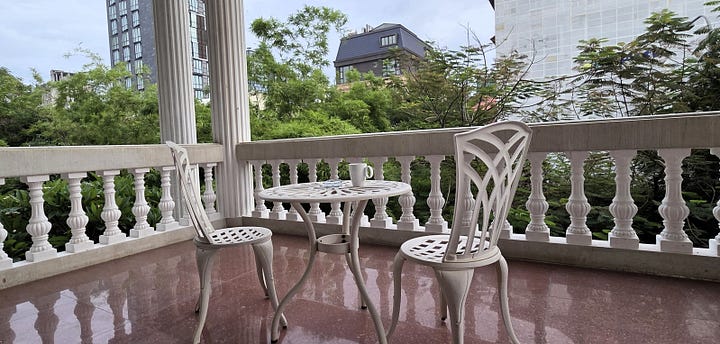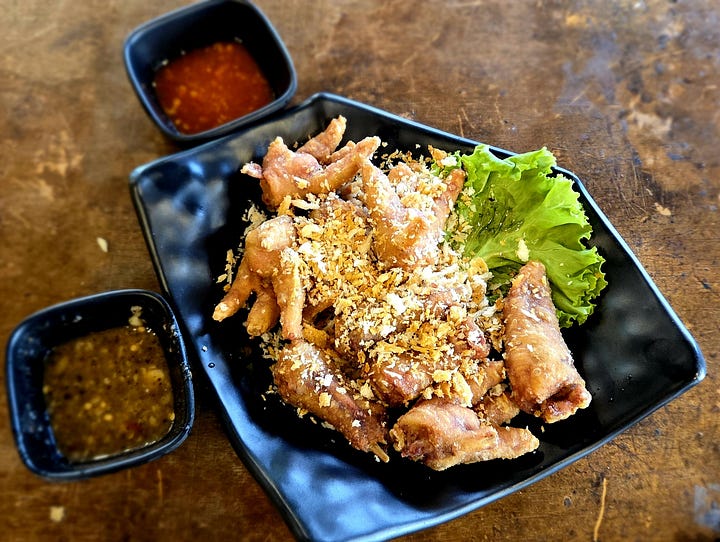Phnom Penh: Where History Lives on Every Corner
From colonial mansions to modern street scenes, Cambodia’s capital blends past and present in surprising ways.
When people come to Phnom Penh for the first time, many of them marvel at how much the old and historic is mixed with the new and modern. It doesn’t take long to realize that nothing gets thrown away in Cambodia. As long as something is still useful, it stays in service.
In June, I stayed on Street 240 in the Daun Penh District and witnessed some shining examples of this charming characteristic of the Cambodian capital city. The leafy green avenue is populated with an eclectic combination of slick and glossy high-rise buildings, open-air with plastic chair Khmer eateries, and classic homes of the French Colonial era.
The hotel where I stayed is The White Mansion, a striking white-walled building that once served as the official residence for U.S. ambassadors to Cambodia. The surrounding neighborhood grew up in the 1910s–20s with grand mansions owned by families linked to the royal dynasties, diplomats, and political figures, including Long Boreth—the last prime minister before the Khmer Rouge—who lived nearby next to the former embassy compound.


Originally an elegant diplomatic residence, the property was transformed into a boutique hotel that opened around 2011 after a sensitive restoration, preserving features like sweeping teak staircases, high‑ceilinged interiors, and stately white columns that evoke a mansion‑like ambience in the heart of the city. Today, it hosts just 30–33 spacious rooms and suites that mix contemporary Khmer minimalism—such as carved wooden panels, polished granite floors, and ornate crown mouldings.
Since I arrived in low season, I got an automatic upgrade to a large suite with a balcony big enough to host a wedding reception. I could just imagine foreign diplomats commiserating over a few gin and tonics, discussing the issues of the day, and complaining about the sweltering heat.
On the ground floor sits Le Café, the on‑site French bakery and café offering freshly baked breads, pastries, and a full breakfast included in most stays, alongside light all‑day dining and drink service to poolside or garden seating.
While I did enjoy breakfast at the cafe, I must confess that I preferred the old school Khmer chicken joint I found just two blocks down the street called Kaiyang. In the shadow of towering chrome and glass apartment towers, this saffron colored two-story relic stood proudly with a steady flow of customers and Grab delivery drivers coming and going. Nobody seems to remember the name of this place, but everyone knows the two-meter chicken statue that greets visitors—mortar and pestle in hand.


One afternoon, I was enjoying a cold beer and a basket of fried chicken feet (don’t judge me until you’ve tried it), and I asked the friendly old Khmer lady who was acting as chef, server, and bartender, how long this iconic restaurant had been in that location. She just gave me a big Cambodian smile and said, “Why, it’s always been here.”
I smiled back. “Of course,” I said. “What a silly question.”
— Bart Walters, IL Thailand Correspondent
Editor’s note: Curious about what it’s really like to live in Cambodia today? The White Mansion is just one chapter in Phnom Penh’s rich story. If you’d like to see the bigger picture, check out IL correspondent Bart’s comprehensive report, Back to the Future in Southeast Asia.
In this in-depth feature, Bart explores:
Why Phnom Penh is both deeply historical and rapidly modernizing
The cost of living and lifestyle expats can expect today
Cambodia’s growing role as a destination for adventurous retirees and remote workers
First-hand insights from Bart’s own travels and conversations on the ground



